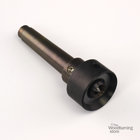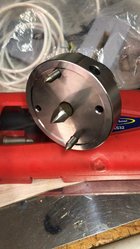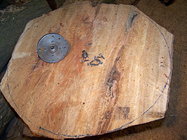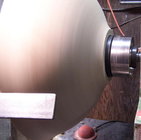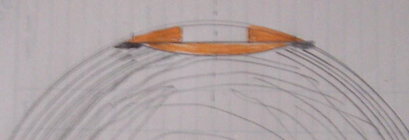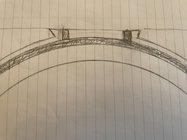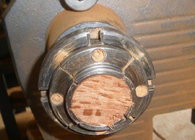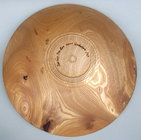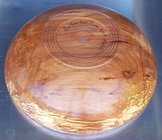It’s 2 1/4” across the spurs. I haven’t sharpened them, haven’t had the need, yet. Looks easy though since they come out.
This drive threads onto a 1 1/4 x 8 spindle, so even I wouldn’t seat it as I described above! That would put huge loads on your spindle and bearings. For this drive, I use the standard ‘on the floor with a mallet. Just be aware that the body is aluminum, so I use a wood block for cushioning.
My method, for taper seated drive centers only, puts no load on the spindle or bearings. The energy is passed through all of that, and directly to the point where the drive meets the wood.
My disclaimer: We should all do what we feel best for us. I’m just giving a different option, which has been working quite well for me.
View attachment 49058
